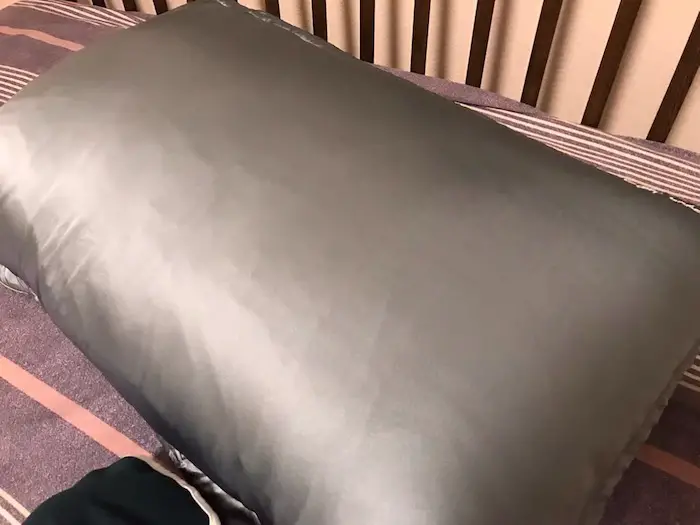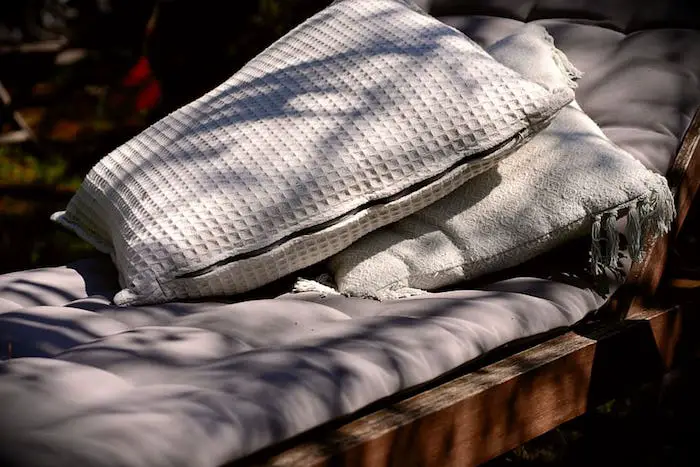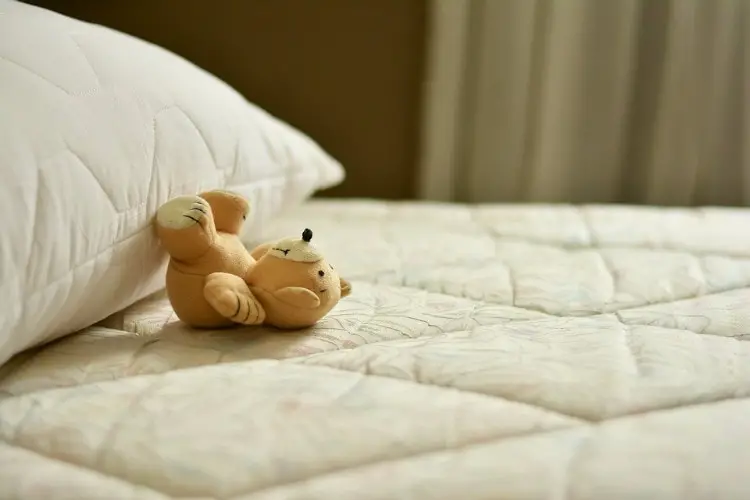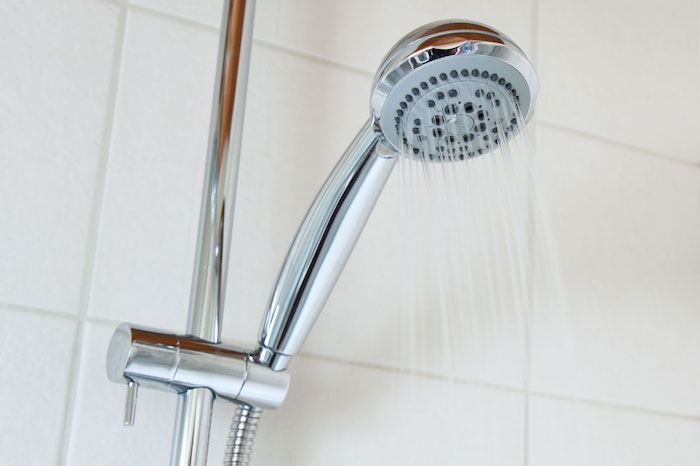Sleep is very vital for maintaining our health, wellbeing, and proper functioning of the body. That said though, sleeping in unpleasant conditions is difficult. If anything, it may lead to stress. That is why people invest in comfortable mattresses, the right pillows, and protective pillowcases among other beddings.
So are pillowcases necessary? Yes, pillowcases cannot be forgone. To start, when sleeping, a normal human produces dead skin, drool, oils, and snot among other things. If your pillow is not covered in a pillowcase, all these substances end up in your pillow. This makes the pillow a breeding ground for bacteria that can pose harm to you and your health. Therefore, to avoid all these, use a pillowcase that can absorb all the stuff that vacates the body. Also, make a habit of washing your pillowcases frequently.
This article will look into the importance of a pillowcase, the need to frequently wash and change your pillowcase, factors to consider when purchasing a good pillowcase among other pillowcase related questions. Keep reading to expand more on the need for a pillowcase.
The Need of a Pillow Case
When you are sleeping, the body takes that time to heal while else the skin restores itself by balancing hydration levels. Through the process, you may sweat and lose other unnecessary body substances such as dandruff and oils.
If you do not have a pillowcase, all these substances are exposed to your pillow. As such, it necessitates the need to wash your pillow.
However, due to the fabric of most pillows, it is almost impossible to wash them. This means you are left with two options; continue using a stained pillow that exposes you to several health risks and two change your pillow that could be expensive. None of the choices is favorable; however, both of them can be avoided by using a pillowcase that can easily be washed. The following are other reasons why you should use a pillowcase
- Easily Washable
As mentioned above, pillowcases are easy to wash and they dry quickly. As such, using them reduces the laundry time that would otherwise be used on Pillows. Pillowcases also keep pillows clean for long.
- Block out Allergens
Since they cover pillows, pillowcases block allergens from being stuck in the pillow fabric. Such allergens include dust and dust mite that thrive in warm humid environments like that of beddings. If you are exposed to these allergens, it may lead to respiratory complications such as asthma.
- Extends the Life Span and Functionality of Pillows
The fluids you release, oils, sweat and droll among others, when exposed to the pillow, they build up and result in reducing the fluff of the pillow. Pillows with reduced fluff are not efficient and they defeat their primary function.
However, with a pillowcase in place, they absorb the fluids and since they should be cleaned frequently, the fluids never get to the pillow. With this, the longevity of the pillow is expanded since it remains fluid free and fluffy, allowing it to continue serving its purpose.
- They Keep Bed bugs Away
Although having bed bugs in your pillow is very rare, taking an extra step to make sure you do not harbor bugs is important. As such, pillowcases can be used to keep bed bugs away from the pillow. The case covers the entire pillow leaving no room for bed bugs to access the pillow. Going that extra mile does not hurt now, does it?
- Traveling
Other than the common use of pillowcases, at home, they come in handy when you are packing your travel essentials. Ideally, different guests use the same pillows placed in a hotel Therefore, if you are looking to maintain hygiene, you may want to cover those hotel pillows with your pillowcase. This is especially if you are working on a tight budget and the hotel’s conditions are susceptible.
Why Should I Change My Pillow Case?
The functionality of your pillowcase is dependent on how frequently you wash it and change it. As such, it is very important to clean and change your pillowcase for the following reasons
- To Avoid Acne
According to research, the hair holds the largest amount of dirt in all your body parts. When sleeping, you mop your hair on the pillow leaving behind all these dirt including hair oils and dandruff among others.
A dirty pillowcase is likely to be clogged with all this dirt. What happens is when you rub your face against this pillow, you expose yourself to the dirt which could result in acne.
Therefore, to avoid such cases, make a habit of cleaning and changing your pillowcases to get rid of the dirt build-up.
- To Avoid Respiratory Complications
By now you understand that a dirty pillowcase could harbor a lot of dust and mites. As such, by not cleaning your pillowcase and changing it, you are exposing yourself to particles that could get into your respiratory tract and trigger an asthma attack or an allergy.
- Dirt Pillowcases Cause lack of Sleep
With the pillowcase being logged with dirt and fluids, it will eventually begin to release odors. These odors may cause a certain level of discomfort that will lead to loss of sleep.
Lack of sleep, on the other hand, may cause different health complications, brain damage and reduction is functionality. Therefore, to avoid all these, invest in sleeping on a fresh pillowcase and enjoy a good sleep.
- Reduce the Risk of Bacterial Infection
Dirty pillowcases harbor bacteria and yeast which if left to remain on the pillowcases that may lead to bacterial infection. Exposing yourself to these bacteria may also compromise your immune system making you susceptible to the attack of other diseases.
Factors to Consider When Choosing a Good Pillowcase
The following are factors you should consider when purchasing a comfortable pillowcase
- Material
There two types of materials used for pillowcases, natural and synthetic material.
The natural materials used on pillowcases are made of cotton, silk, linen, and flannel among other natural fabrics. In this category, the cotton material highly absorbs fluids. Cotton can hold fluids weighing up to 27 times its weight.
Due to the absorbent property of cotton, a pillowcase made of cotton tends to hold body fluids more than one made of silk. As such, when the cotton made pillowcase is logged with fluids it may worsen an outbreak of acne. Cotton made pillowcases may also cause friction on the skin leading to creases, wrinkles, and lines on your face

Therefore, the most recommended material is silk made pillowcase. However, if you are concerned about aesthetics, silk pillowcases are not appealing to the eye.
The other type of material is a synthetic material. This includes nylon and polyester. Synthetic made pillowcases have a lower absorption capacity. As such, using them tends to lead to dry hair and skin.
When it comes to materials the best material for your pillowcase is a natural fabric, specifically, silk made pillowcases.
- Softness
When purchasing a pillowcase be on the lookout for soft pillowcases. This is because, when sleeping, you turn frequently without any type of protection. As such, rough pillowcases can cause scratches on your neck. Rough pillowcases are mostly made of nylon and plastic.
Other than that, rough pillowcases can cause wrinkles and lines on your face. Unless you are looking to age early, you should invest in soft pillowcases
- Noise Free Pillowcases
When it comes to noise, it is recommended you use pillowcases that do not produce noise when you are sleeping. Besides, noisy pillowcases can cause disturbance when sleeping and therefore lead to a lack of sleep.
Related Questions
How frequently should you wash your pillowcase?
According to skincare experts, you should wash your pillowcase at least once a week. However, if you can wash it after every few days, that would yield the best results. When washing your pillowcase, it is recommended you avoid using a softener. This is especially for people with sensitive skin; the skin tends to react with the traces of the softener left behind and may lead to a more severe acne breakout.
Is a pillowcase the same as a pillow protector?
No, these two types of beddings are different. Usually, a pillow protector is of a much thicker fabric and in most cases, it is fitted with a zipper. The zipper is used to hold the pillow in. As for a pillowcase, it usually does not have a zipper.
Moreover, when using the two, a pillowcase will be used for decorative purposes while the protector will be most appropriate for protecting the pillow from stains and damage. Also, when using the two beddings the pillow protector will be placed on top of the pillow cover.
Related Article:
7 Best Washing Machine For Comforters
4 Best Pillowcases For Sleeping With Wet Hair
The 5 Best Pillows For Sleeping In A Recliner


